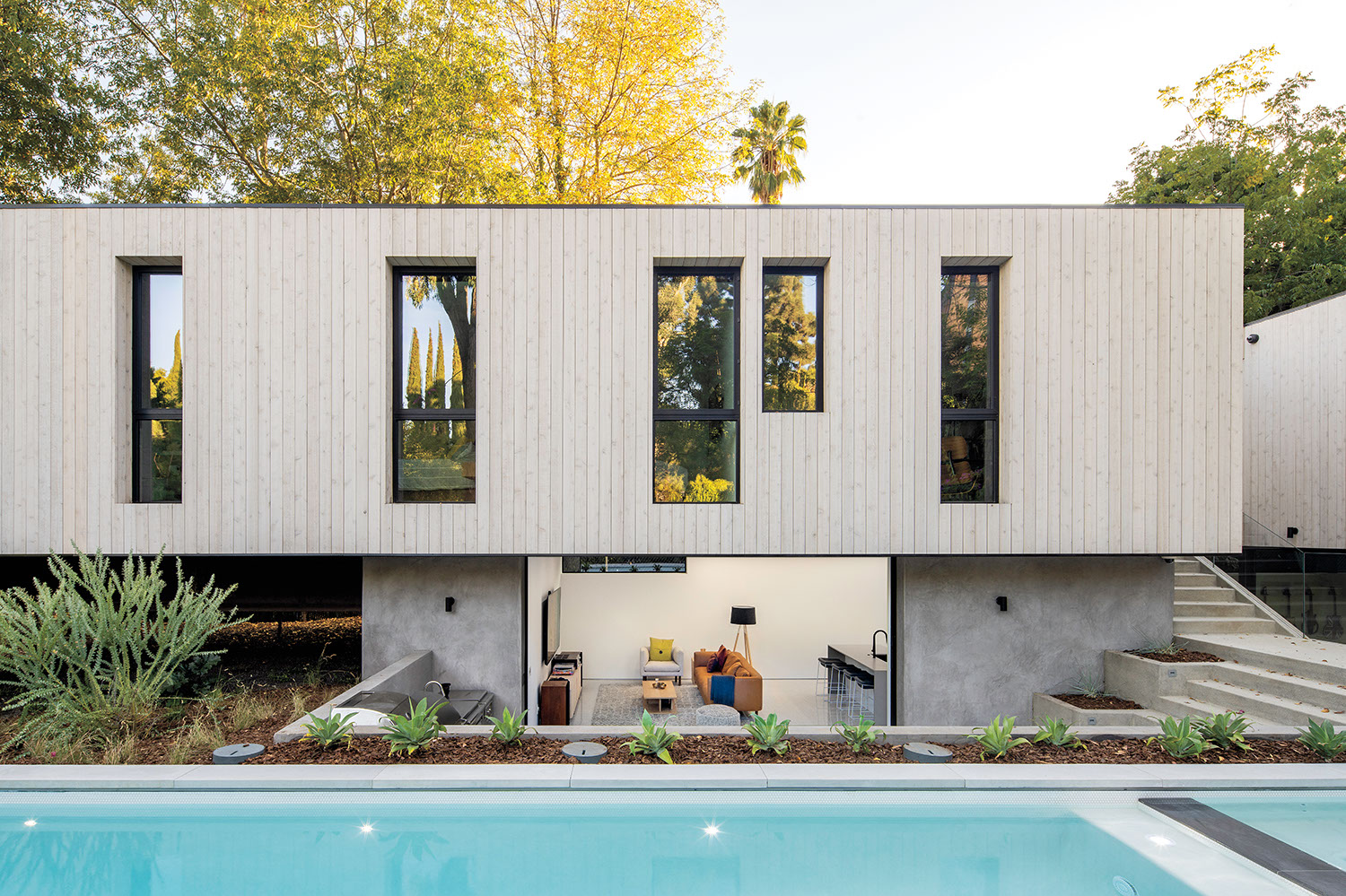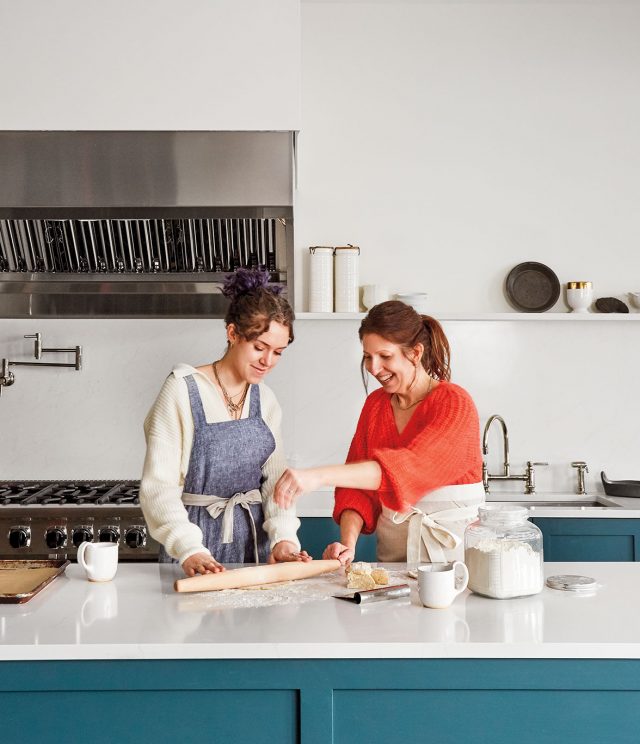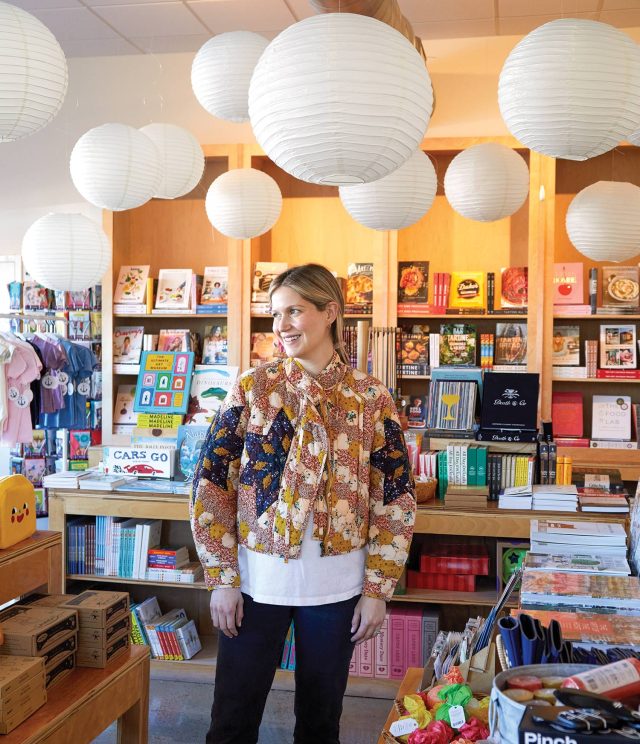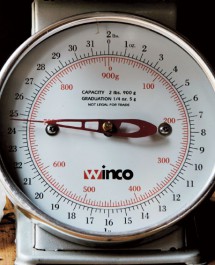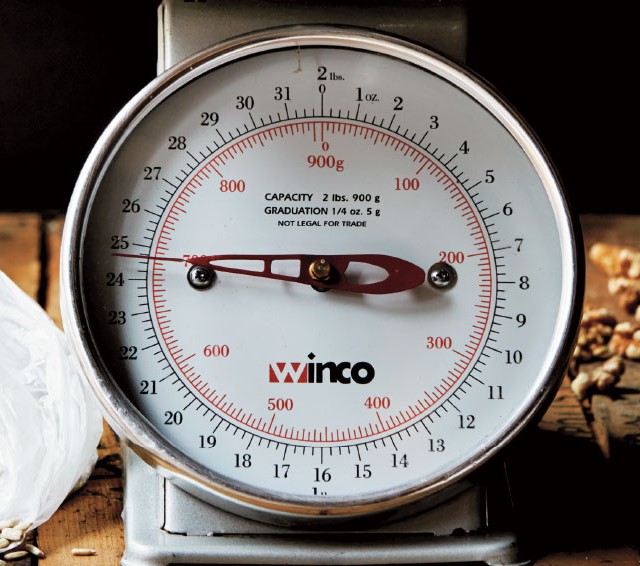
STORY BY JEANNE O’BRIEN COFFEY ✷ PHOTOGRAPHS BY BRANDON SHIGETA
Dan Brunn’s living room, complete with firepit, is suspended over a stream. It’s a special spot, especially in the heart of a sprawling city, says Brunn, principal of Dan Brunn Architecture in Los Angeles. “You’re really connected to nature, floating in air,” he says of the central living room in his 210-foot-long home, dubbed Bridge House.
Design inspiration grew from that stream, when the opportunity to flip an aging property in the Hancock Park neighborhood of L.A. expanded instead into a showcase for a mix of green-living and sustainable design. “I wanted to show what a home of the future could be—without it feeling like a home of the future,” says Brunn, whose firm specializes in crafting structures that are respectful of natural surroundings. “I want people to see that they can have something that’s really smart and well thought out without being in your face.”
Rather than an inspiration, the lot would have seemed like a challenge to most architects. Not only is it bisected by that stream, but the long site stretches 260 feet deep from front to back. To take advantage of that, Brunn decided to upend traditional siting, building the house perpendicular to the street rather than parallel along nearly the entire length of the property.
From the grand front auto court, visitors can see the entire lot, taking in the stream bed and the infinity pool below. “The way it’s situated obliterates the idea of a front yard and a rear yard,” says Brunn.
It wasn’t mere lot geometry and aesthetics that inspired that placement—turning the house lengthwise created space for a long bank of large windows facing north, letting in plenty of light while keeping the house cooler during Los Angeles’ hot summers. “If you situate a house in the right way, it’s passively smart,” Brunn says, explaining that the heat gain is minimized by limiting southern exposure. Site constraints can often be used for a positive benefit, he adds, and that should be top of mind in any new build.
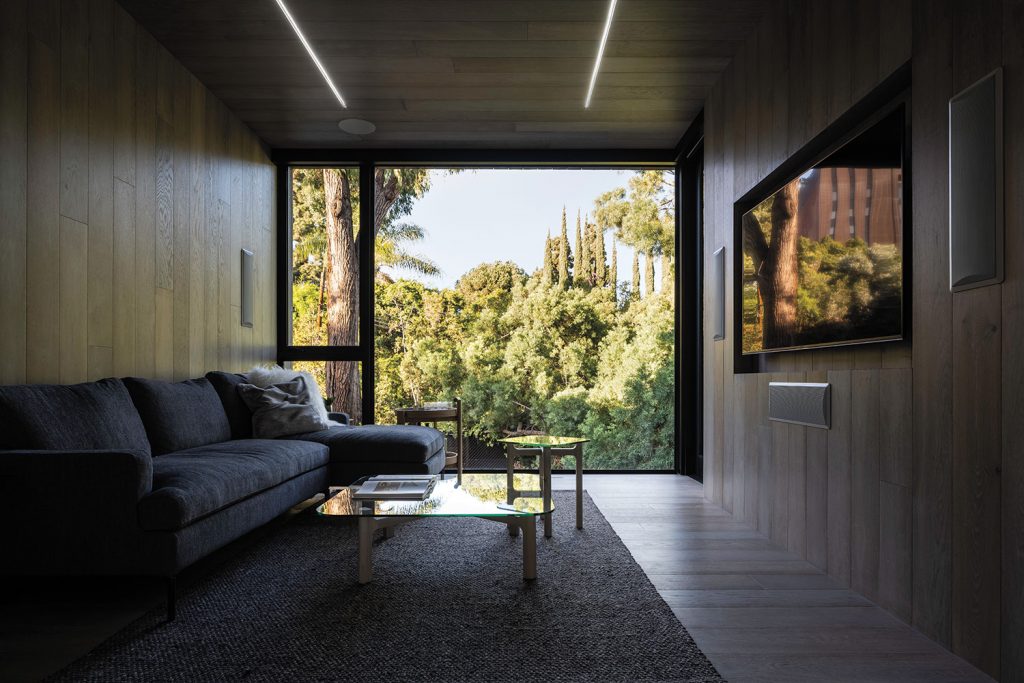
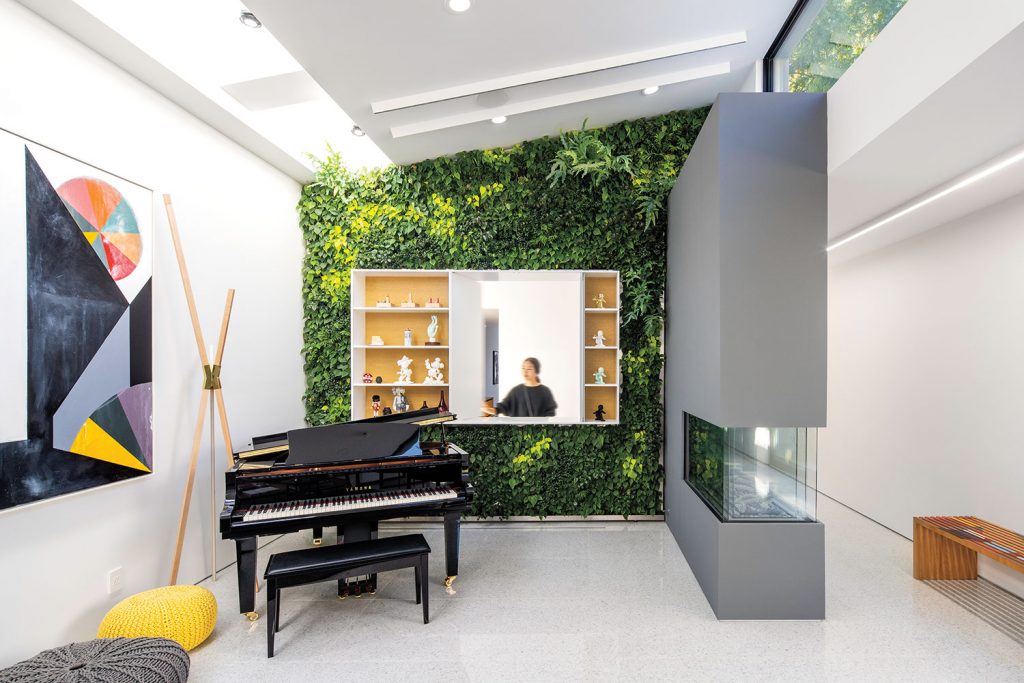
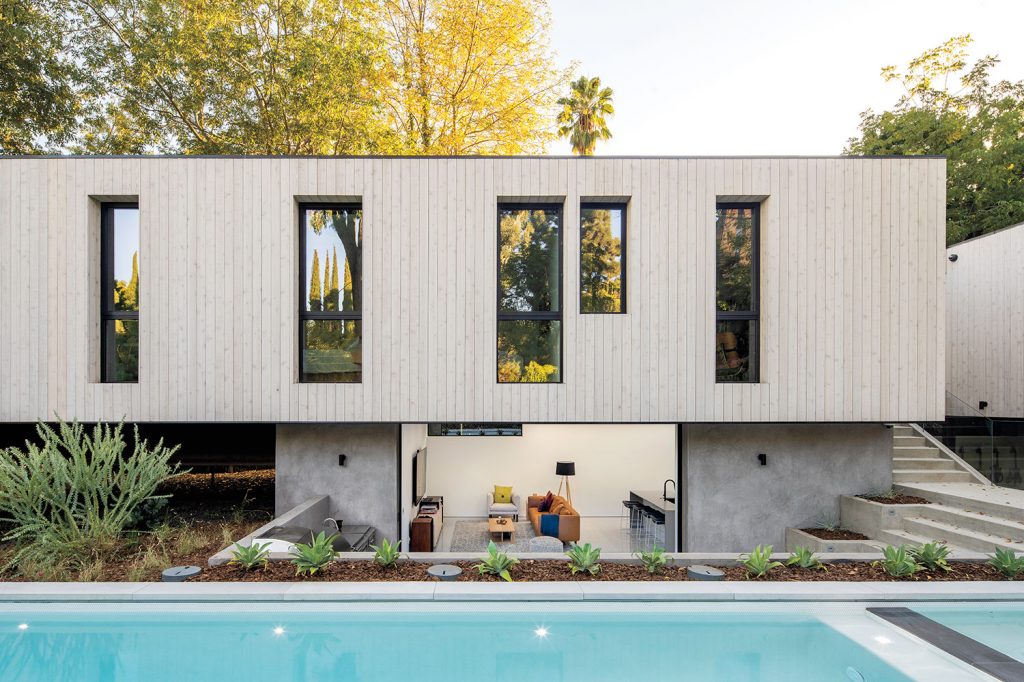
To showcase sustainable construction, Brunn turned to Bone Structure, a Canadian luxury modular home company making inroads in the U.S. market with technology that combines the advantages of a post-and-beam structure with highly energy efficient insulation. “Bone Structure’s system of beams and columns yields a net-zero home very easily, using nearly 90 percent recycled steel and high levels of insulation,” Brunn says. “With that, and an integrated solar energy system [from SunPower], we were really able to push the limits.”
While the structure is fairly standardized and a mere 20 feet wide, Brunn says thoughtful design can bring a multitude of different feelings, from the two-story grand salon at the entrance, back through the rest of the home which has lower ceilings to convey intimacy. The kitchen and dining room are lined with 10-foot-by-10-foot windows, while the sleeping quarters have smaller ones—almost like portholes—to let in light and nature while creating coziness and privacy.
The bedrooms look out on an infinity pool, custom-developed as part of a whole house filtration and conservation system from Pentair. A sustainable solution for water was very important to Brunn—living in Los Angeles and growing up in Tel Aviv, he feels that he has an appreciation for water that many Americans lack. “In Israel, water is carefully conserved and thought about a lot,” Brunn says. “I noticed when I moved to the States, people waste a lot more water. The thinking is very different.”
The architect knew Pentair was the obvious fit having worked with them on past projects. “They have the most robust, complete and forward-thinking solutions in the industry. It was a natural choice for us,” he says. The Pentair whole-house filtration and softening system provides water that feels great in the shower and drinking water at every tap, eliminating many plastic bottles.
But the stream also puts water literally at the center of his home. The natural feature enhances what Brunn calls a “choreography of architecture,” with the open-air living room across the stream providing a delineation between the home’s public and private spaces.
The plan was very intentional. In his former home, just across the street, Brunn found himself giving public tours and opening his doors to art events, but it was challenging. “My previous place wasn’t designed to be a house of congregation,” Brunn says, explaining that the spaces where visitors were welcome and where they were not could be confusing. With the linear design of his new home, it is easy to see where the party ends.
While Brunn designed his house for gathering, he intentionally kept the scale intimate, with smaller than average bedrooms and some shared baths. At 4,500 square feet, Bridge House is not small, Brunn admits, but it is bucking the trend in high-end neighborhood home design. “This is a huge lot,” he says. “We could have built a house that’s much larger than this, but I took it upon myself to actually build smaller.”
Brunn’s biggest hope is that homeowners take a page from his book and think about what they need, rather than building a 10,000-square-foot home to maximize price per square foot. After all, he says, “Size says nothing about the actual quality of where you’re going to be spending your time.”
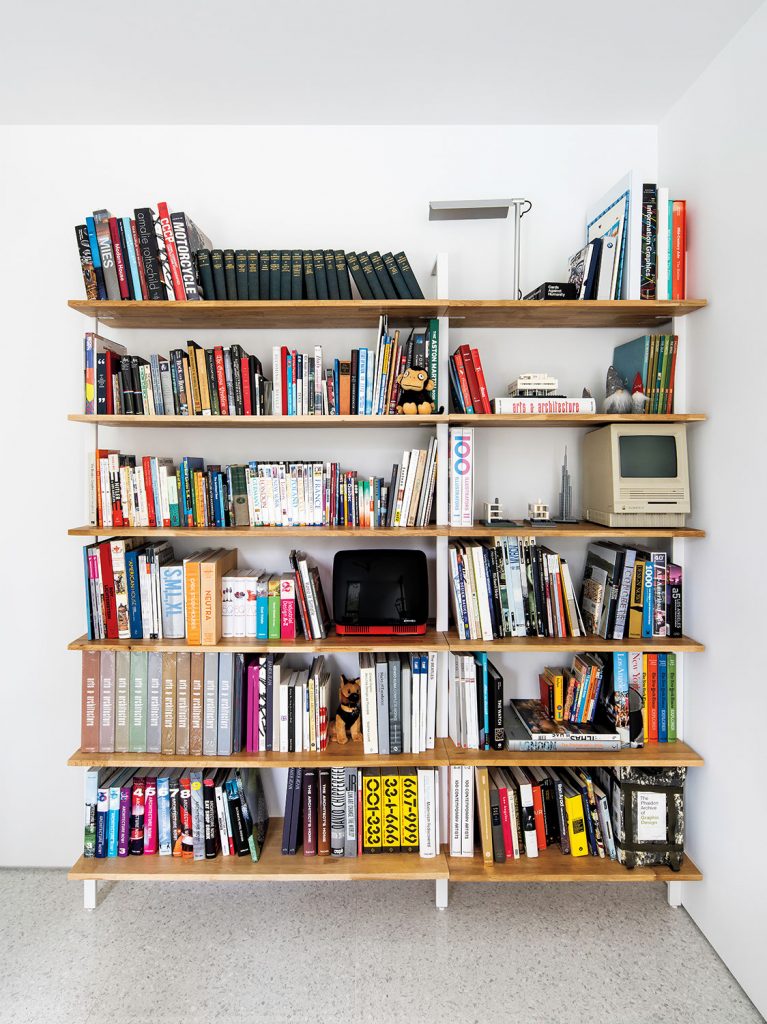
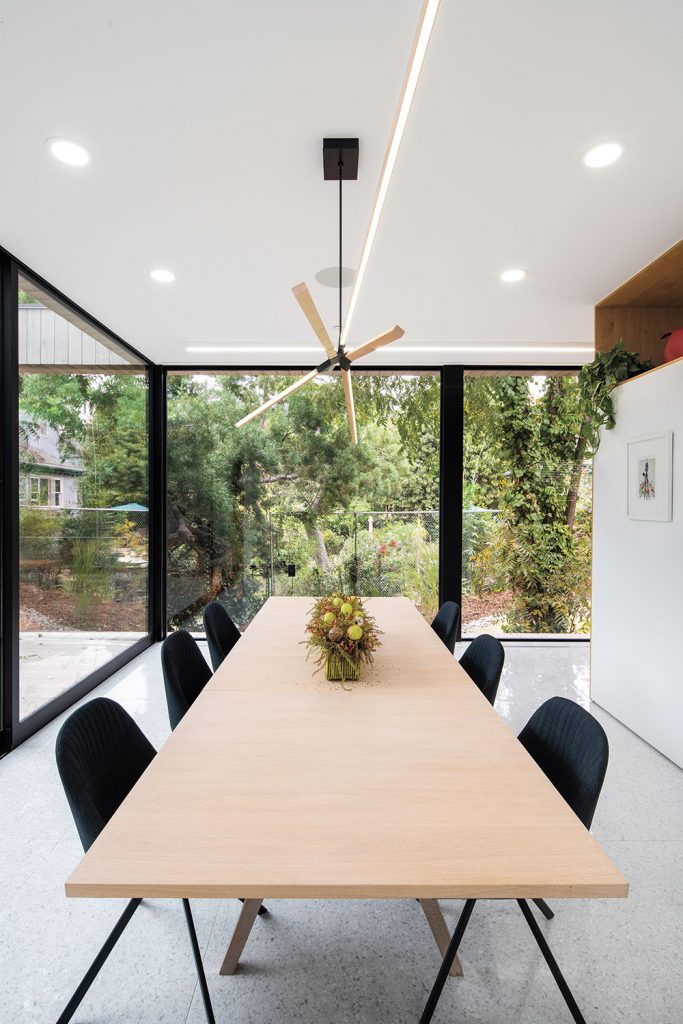
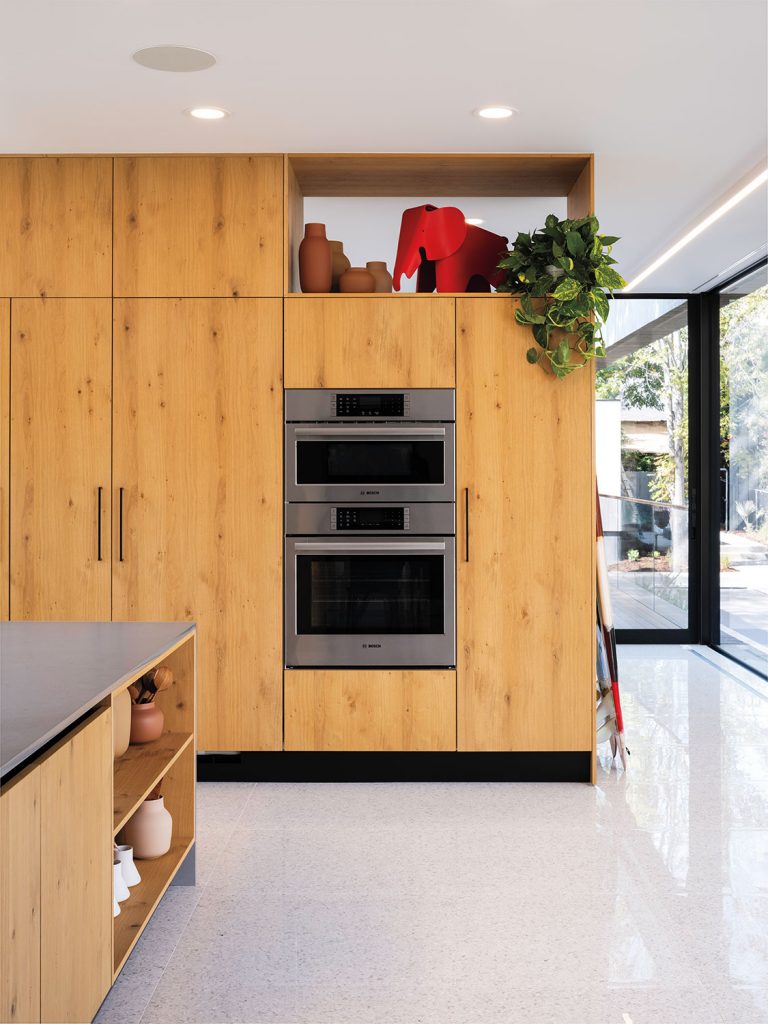
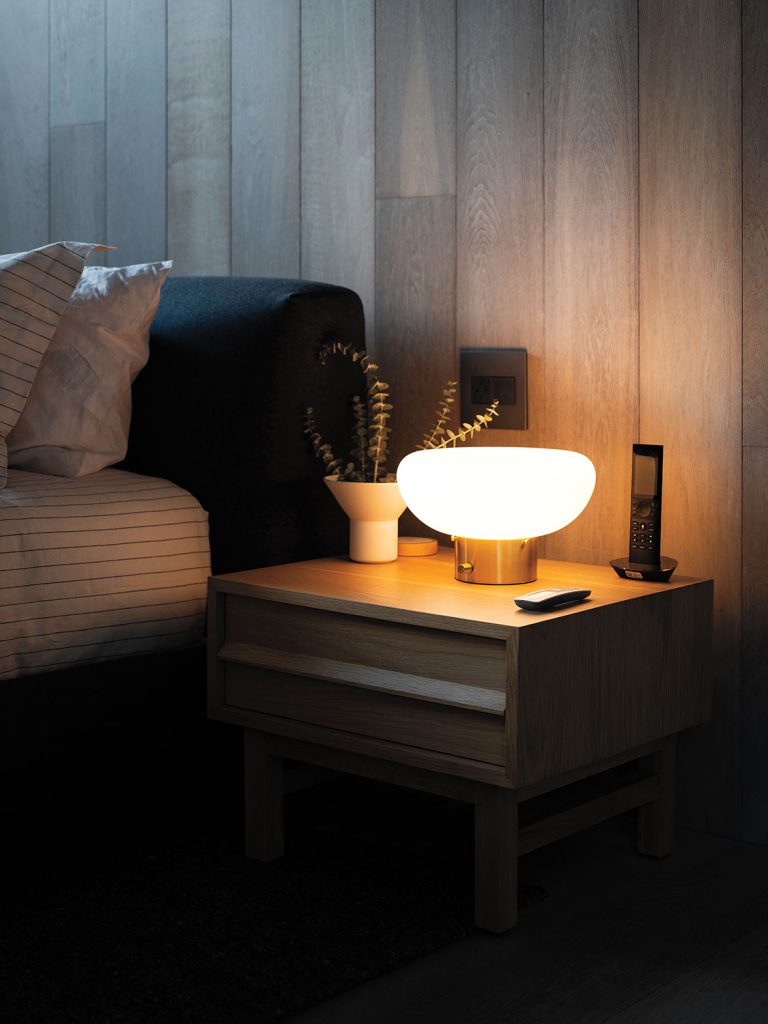
Minimalist bookshelves showcase art, architecture, and travel tomes, mixed with unique repurposed bookends.
The dining room, suspended over the streambed, emphasizes the surrounding nature with walls of windows.
Glass doors from the outdoor living room lead to the kitchen, where a Bosch oven is tucked into oak-paneled cabinetry by Aster Cucine for Cantoni.
The sleeping space, lit by an EQ3 lamp, is smaller than average by design: It creates a cozy footprint while respecting its purpose.
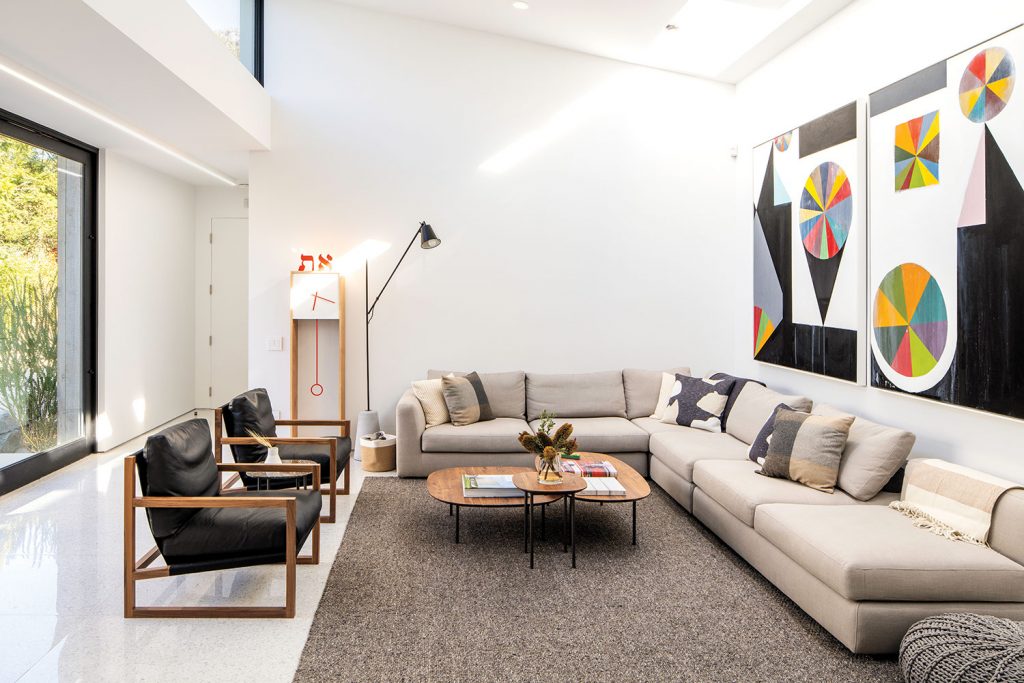
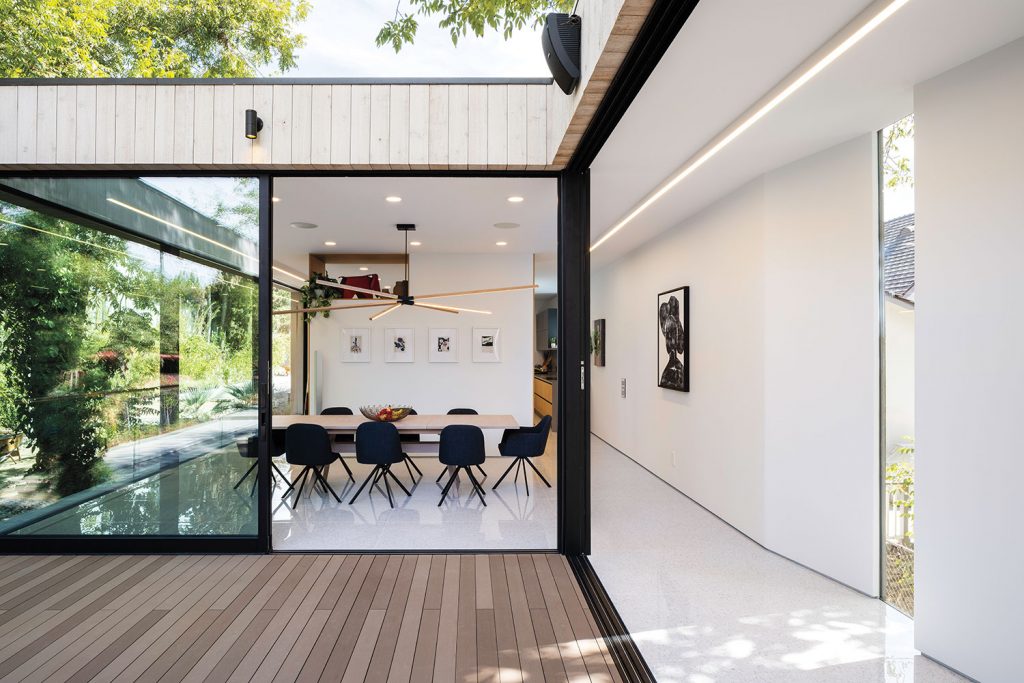
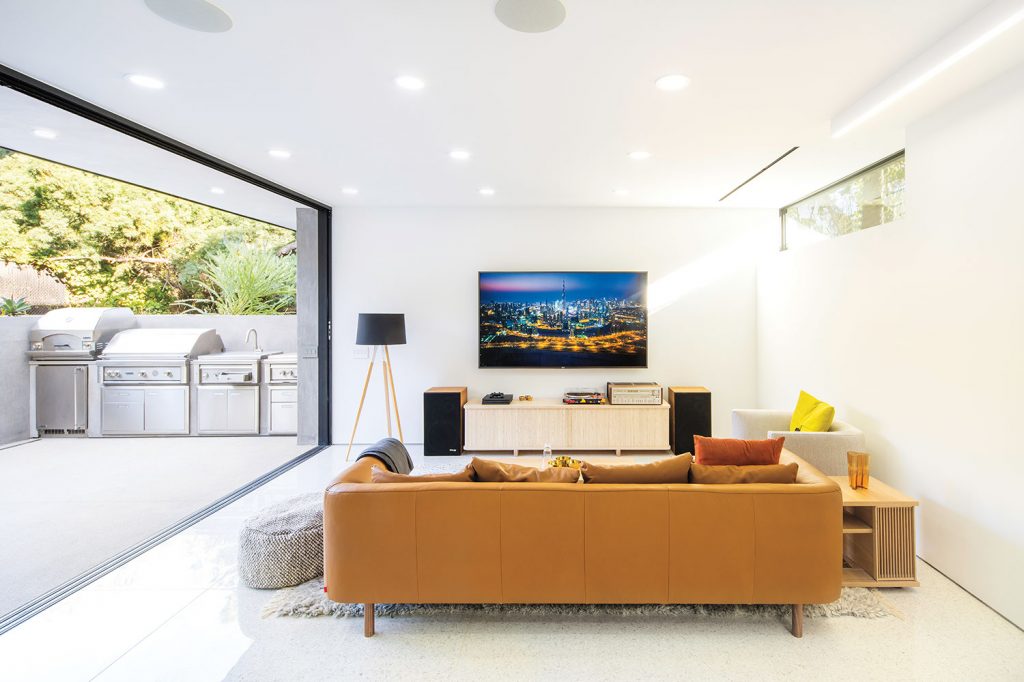
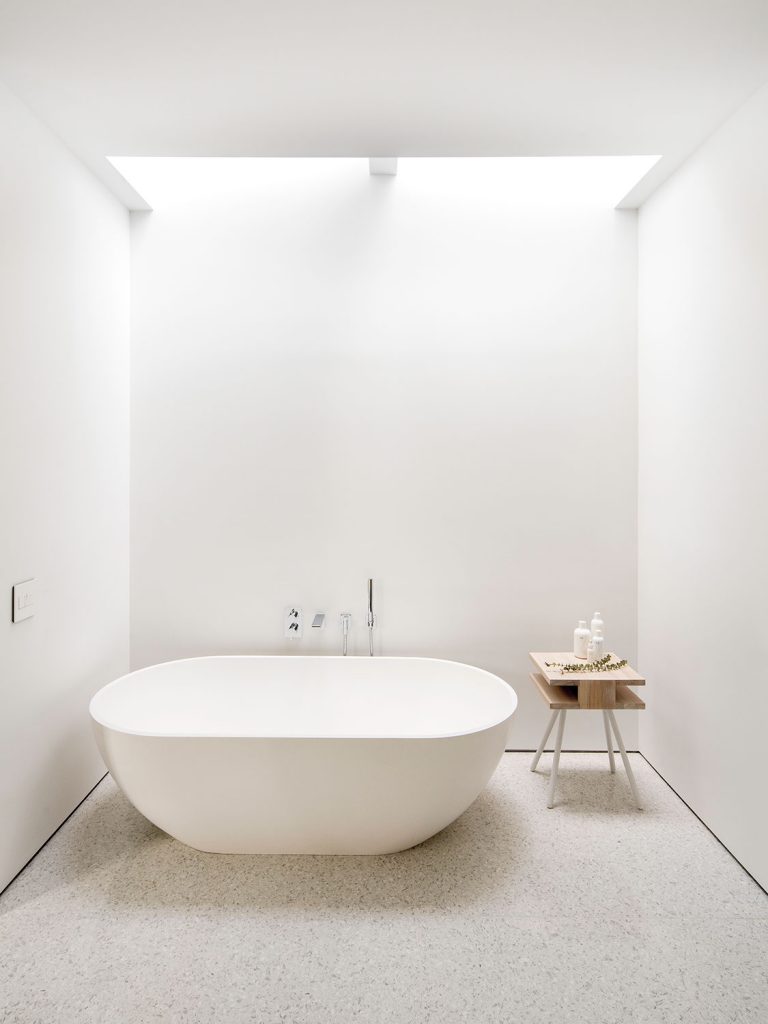
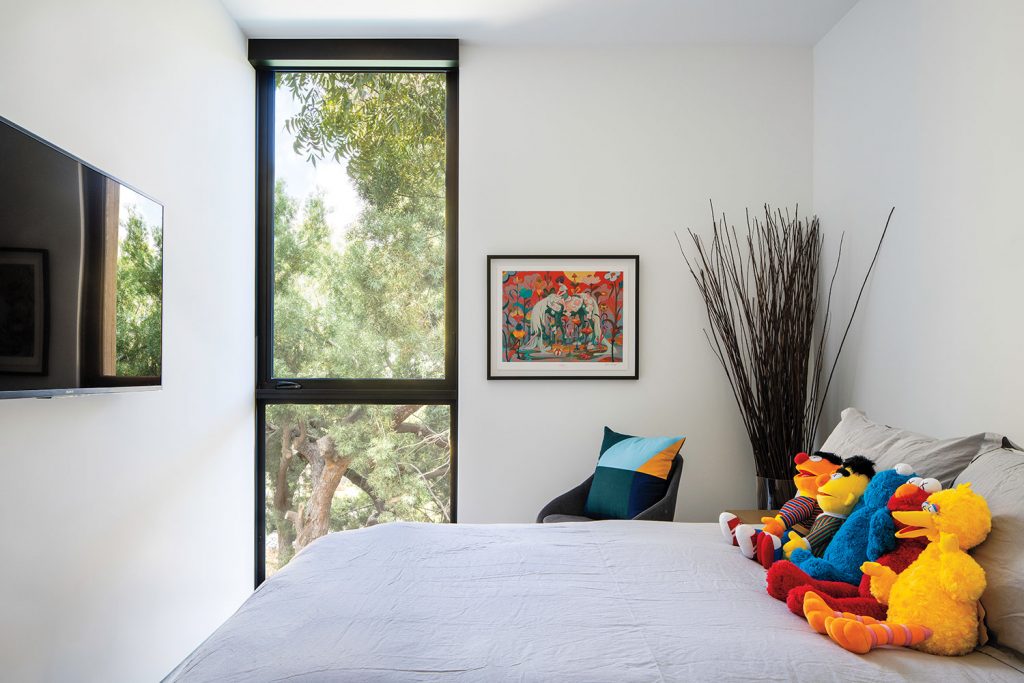
The music room and outdoor kitchen tucked next to the pool, under the sleeping quarters, are intended for more intimate gatherings.
A whole-house Pentair filter yields drinking water at every tap, while a water softener makes the water feel good on your skin while soaking in the Duravit tub.
Smaller windows in the bedrooms create a vignette, letting in light and nature while offering privacy.
H2-KNOW
Here’s a surprising fact about water—the quality of what comes out of your tap can change from day to day, or in some cases even hour to hour, says John Jacko, executive vice president and chief growth officer at Pentair. The Minneapolis-based company delivers a comprehensive range of smart, sustainable water solutions to homes worldwide—everything from filtration systems to pool heaters and even sump pumps. “Your water quality can even be different from that of your next-door neighbor,” Jacko says, so it’s important to test what is coming into your house to build a filtration system that is right for you.
But filtration is really just the start, Jacko says. “Softening” water—a process by which hard minerals are removed—is something that few people consider, but it can make a big difference in everything from the way your hair and skin feels to the amount of detergent you use in your washing machine. “We like to think of softening as a sustainable solution that allows you to use fewer chemicals,” Jacko says. “You can use just a dot of shampoo and it goes a long way. Removing those minerals also extends the life of appliances by reducing the build-up hard water leaves behind.
While Bridge House took advantage of Pentair’s softening and filtration systems, the home also cut down on chemical usage in the pool and spa with the company’s new UV disinfection system, which minimizes the need for chlorine. Combined with a Pentair hybrid heater for the spa, which uses a combination of gas and a heat pump to warm water faster and more efficiently, and a cycling pool pump to cut down on energy use, the solutions help Bridge House work toward net-zero efficiency, Jacko says. “We’re saving people money on their utility bills,” he notes.
All these systems can be monitored using Pentair’s smart home technology, which reports everything from water usage to needed filter changes, and can even alert homeowners to the possibility of a leaky pipe. Currently each has its own app, but Jacko says even that is about to get easier, as Pentair rolls out a new app this fall that will gather all those individual systems together. “Our customer feedback is that they want it all in one place,” he says. “The technology is all there—we are just creating a more streamlined experience.”

